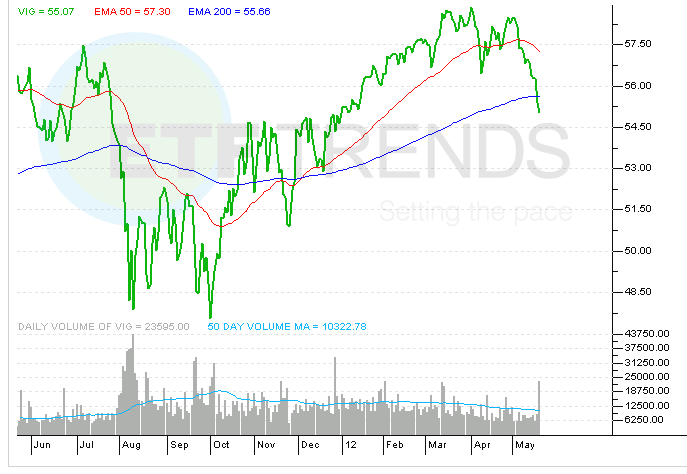Dissecting Leveraged ETF Returns
Post on: 1 Май, 2015 No Comment

Leveraged exchange-traded funds are a relatively new and unfamiliar product to most investors, but they could be the ticket investors need to bring in increased returns.
These funds are designed to deliver a greater return than through holding regular long or short positions. In this article we explain what leveraged ETFs are and how they work in both good and bad market conditions.
About Leveraged ETFs
Exchange-traded funds are traded on a stock exchange. They allow individual investors to benefit from economies of scale by spreading administration and transaction costs over a large number of investors.
Leveraged funds have been available since at least the early 1990s. The first leveraged ETFs were introduced in the summer of 2006, after undergoing almost three years of Securities And Exchange Commission (SEC) review. Leveraged ETFs mirror an index fund, but they use borrowed capital in addition to investor equity to provide a higher level of investment exposure. Typically a leveraged ETF will maintain a $2 exposure to the index for every $1 of investor capital. The fund’s goal is to have future appreciation of the investments made with borrowed capital exceed the cost of the capital itself.
Maintaining Asset Value
The first investment funds that were listed on stock exchanges were called closed-end funds. Their problem was that pricing of the fund’s shares was set by supply and demand, and would often deviate from the value of the assets in the fund, or net asset value (NAV). This unpredictable pricing confused and deterred many would-be investors.
ETFs solved this problem by allowing management to create and redeem shares as needed. This made the fund open-ended rather than closed-ended, and created an arbitrage opportunity for management that helps keep share prices in line with the underlying NAV. Because of this, even ETFs with very limited trading volume have share prices that are almost identical to their NAVs.
Note: ETFs are almost always fully invested; the constant creation and redemption of shares does have the potential to increase transaction costs because the fund must resize its investment portfolio. These transaction costs are borne by all investors in the fund.
Index Exposure
Leveraged ETFs respond to share creation and redemption by increasing or reducing their exposure to the underlying index using derivatives. The derivatives most commonly used are index futures, equity swaps and index options.
The typical holdings of a leveraged index fund would be a large amount of cash invested in short-term securities, and a smaller but highly volatile portfolio of derivatives. The cash is used to meet any financial obligations that arise from losses on the derivatives.
There are also inverse-leveraged ETFs that sell the same derivatives short. These funds profit when the index declines and take losses when the index rises.
Daily Rebalancing
Maintaining a constant leverage ratio, typically two-times the amount, is complex. Fluctuations in the price of the underlying index change the value of the fund’s assets, and this requires the fund to change the total amount of index exposure.
Example: Rebalancing a Leveraged ETF
Suppose a fund has $100 million of assets and $200 million of index exposure. The index rises 1% in the first day of trading, giving the firm $2 million in profits. (Assume no expenses in this example.) The fund now has $102 million of assets and must increase (in this case, double) its index exposure to $204 million. Maintaining a constant leverage ratio allows the fund to immediately reinvest trading gains.
This constant adjustment, also known as rebalancing, is how the fund is able to provide double the exposure to the index at any point in time, even if the index has gained 50% or lost 50% recently. Without rebalancing, the fund’s leverage ratio would change every day and the fund’s returns, as compared to the underlying index, would be unpredictable.
In declining markets, however, rebalancing can be problematic. Reducing the index exposure allows the fund to survive a downturn and limits future losses, but also locks in trading losses and leaves the fund with a smaller asset base.
Example: Rebalancing in Declining Markets
Consider a week in which the index loses 1% every day for four days in a row, and then gains +4.1% on the fifth day, which allows it to recover all of its losses. How would a two-times leveraged ETF based on this index perform during this same period?














